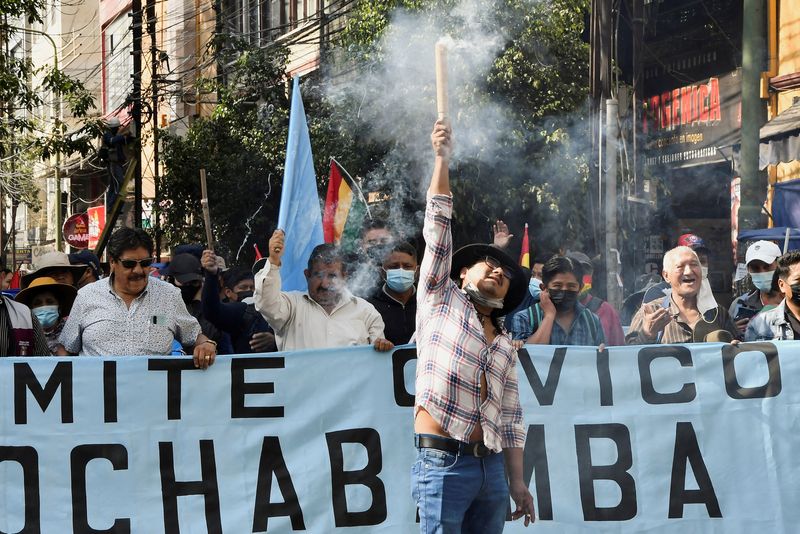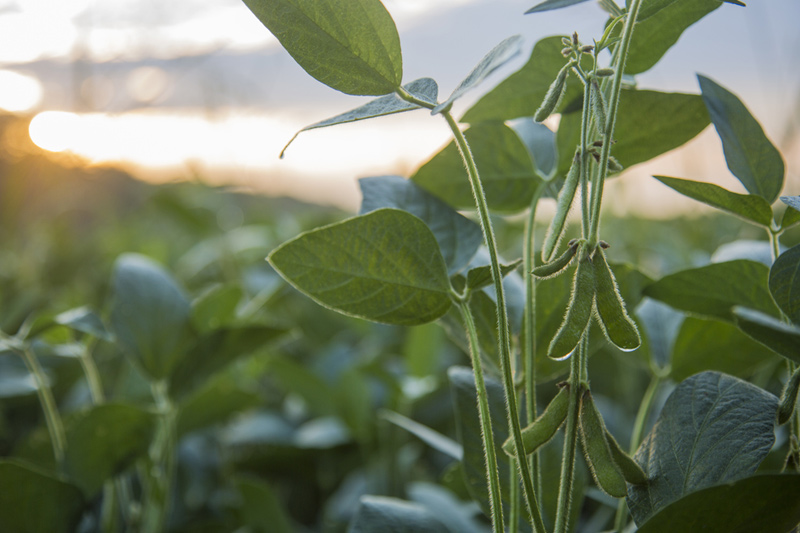By Andrea Martinez, Monica Machicao and Daniel Ramos
SANTA CRUZ/LA PAZ, Bolivia (Reuters) - Tropical, sunny and relatively wealthy, Bolivia's farming region of Santa Cruz has long butted heads with the arid highland political capital La Paz. Now, buttressed by rising soy and beef exports, it is in a power struggle for greater political and financial clout.
In Santa Cruz, the country's largest city, protesters have blocked streets for weeks in a battle over the timing of a population census that would likely hand the region more tax revenues and seats in Congress. Some have voiced calls for more autonomy or even independence.
The protests have brought the city to a standstill and jammed transport of goods from the region, costing hundreds of millions of dollars in economic damage, officials say. There have been violent clashes with groups allied to the government.
But beneath the fiery surface is some cold hard economics.
Santa Cruz, one of the most affluent and populous regions of the landlocked country, has seen its proportion of Bolivia's exports balloon in recent years. This year to date, it is the country's top export hub - ahead of metal-producing Potosi or La Paz.
"Santa Cruz is Bolivia's economic stronghold, it's the economic locomotive of the country," said Gary Rodríguez, general manager of the Bolivian Institute of Foreign Trade.
(Graphic: Bolivia exports: https://graphics.reuters.com/BOLIVIA-ECONOMY/znvnbekeqvl/chart.png)
GAS TO SOY
Bolivia's economy has shifted over the years. Exports used to be dominated by natural gas, found principally in Tarija to the south. Metals including gold, scattered through the Andean highland regions, remain important.
But agriculture has been the big winner in recent years, driving Santa Cruz's rise. China has been gobbling up beef from cattle ranches around the region, while exports of soy and its byproducts have soared.
That has fed popular demand for more state resources in the conservative and strongly Catholic region, where many say they feel overlooked by the government in far-off La Paz, controlled for most of the last 15 years by the socialist MAS party.
"The state doesn't respect Santa Cruz for what it does, for what it has been generating and for what it contributes to society," said Edwin Soria Prado, a university worker in Santa Cruz, who had been protesting at a roundabout for 25 days.
The government of leftist President Luis Arce says the protesters are being led by the Santa Cruz elite and are damaging the economy, already hit by global uncertainty due to the war in Ukraine and rising food and fuel costs worldwide.
"The strike has generated a loss of more than $700 million," Economy Minister Marcelo Montenegro recently told reporters.
(Graphic: Bolivia's farm hub: https://graphics.reuters.com/BOLIVIA-ECONOMY/lgpdkwnwrvo/chart.png)
CHRISTMAS PROTEST?
The recent clashes have been sparked by government delays over the production of the national census, which demonstrators say must be carried out in time for the country's next general election in 2025.
They argue the census will impact the electoral map, giving Santa Cruz more prominence and eventually more seats in the country's legislature. It will also feed back into how much state budget is directed towards the province.
Last carried out in 2012, the census was originally slated to be held this month. But, without giving a reason, the government pushed it back by two years, before changing gears and saying it will be held in early 2024, in time to impact the 2025 ballot.
Protesters, however, remain unconvinced and are demanding the government's promises be written into law.
On the street, Nena Arias said she had been blockading her street corner for 26 days and counting. She and others had put up a fake Christmas tree with decorations, a reflection of how people in the city are entrenched in their protest positions.

"If we have to spend Christmas here, we will do it," she said.
(Graphic: Farm products boom: https://graphics.reuters.com/BOLIVIA-ECONOMY/gkvlwgdwbpb/chart.png)
